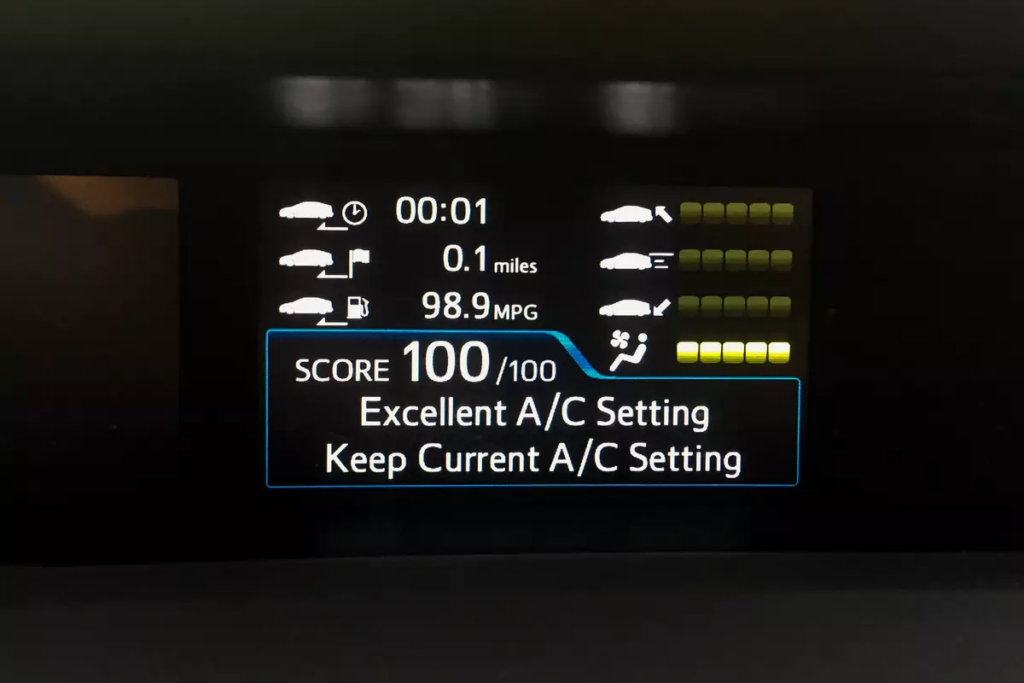
Gamifying Sustainability: Turning Eco-Choices into Playful Wins
The Earth, once a vibrant haven, now bears the scars of our uncontrolled consumption. As we confront significant environmental challenges, consumerism is like a dark cloud that follows us everywhere. And even though there are a variety of solutions for saving our planet, they still haven’t become habits accepted by the majority of the population. However, a light flickers: the spark of gamification, a tool that has a power not only to nurture sustainable behavior, but to make it fun as well.
The problems we’re dealing with aren’t just happening in big companies. The whole world is struggling with a massive waste issue. It’s predicted that by 2050, the total global waste could hit a mind-boggling 3.4 billion tons. However, applying gamified actions can be an efficient way to fight this crisis by means of changing the attitude and behavior patterns of individuals and communities. Imagine, for example, a city or town where all citizens participate in a waste recycling program for points, badges that can bring them social benefits. This approach can transform waste management into an exciting and fun activity that everybody wants to participate in. Moreover, nowadays there are many companies such as Multiplayer offering gamified solutions to brands that can be used to promote a greener lifestyle and contribute to shaping more sustainable behavior.
In the upcoming years, a surge in consumer demand for sustainable brands is expected due to a movement accelerated by the impacts of the pandemic. A remarkable 95% of survey respondents now express a concern for environmental issues. What’s interesting is that over 90% of business leaders see sustainability as a key factor for making their company successful. In response to this change in thinking, companies are really stepping up their game when it comes to being eco-friendly. They’re trying out cool ideas like using gamification to boost their efforts in helping the environment.

Hedonic Motivation: When Fun Fuels Green Choices
Implementing sustainable practices often encounters a tough opponent: inertia. For example, in offices employees accustomed to established routines may perceive eco-friendly measures as inconvenient roadblocks, hampering the organization’s progress. Gamification, however, possesses the magic touch to unlock the door to change. By adding points, badges, and leaderboards into daily tasks, gamification adds a fun twist to sustainability. It’s like turning regular, boring jobs into exciting quests. Consider the office energy challenge: no longer a tedious exercise in thermostat adjustments, but a captivating race to the top of the leaderboard, fueled by interdepartmental rivalry and the sweet reward of a greener office.
For companies dealing with the challenge of sustainability, gamification isn’t just a trendy trick. It’s a powerful strategy. Turning eco-friendly initiatives into fun games can break through people’s hesitation, spark a love for green habits, and, as a result, reshape the way a company works.
But gamification’s impact goes beyond mere amusement. Studies reveal the potent influence of hedonic motivation – the inherent pleasure derived from playing – on pro-environmental behavior. A study on gamification of eco-driving demonstrated that participants tend to enjoy the gamified driving and demonstrated the inclination to keep following the green practices. It underlines how important application of gamified elements is for sustainable behavior, especially among audiences that thrive in playing learning environments.
Riding the Green Wave: Capitalizing on Consumer Demand and Building Brand Loyalty
There is also the other side to sustainable behavior. The workplaces and other communities where people co-exist together can create the entire sustainable communities by means of applying particular gamified practices and affect significant groups of people. On the other hand, such a big community of people as brands’ customers exist separately from each other and creating a two-way communication in terms of increasing sustainability is a completely different issue.
More and more consumers these days are taking into account brands’ attitude towards sustainability when choosing and buying products. This growing interest in eco-friendly products is a unique opportunity for companies to leverage gamification. When companies turn their efforts to be more sustainable into a game, firstly, it gets people who care about the environment excited and secondly, attracts the attention of other people to sustainable behavior. It also helps companies stand out from the competition and earn customers loyalty. Think about a coffee shop that gives customers points and badges for using reusable mugs or a clothing brand that turns sustainable fashion choices into a fun game. It can create communities and even movements towards a green behavior.
The Science of Play: Motivational Affordances and the Psychology of Change
Gamification works like a charm because it taps into something deeply human: the desire for accomplishment and acknowledgment. The notion of “motivational affordances” provides an explanation for why certain game design elements, such as leaderboards or progress indicators, are effective in behavior changing. This theory aligns with established psychological principles, demonstrating the capacity of gamification to tap into intrinsic motivation which is a key to completing particular actions.

Building upon this foundation, forward-thinking minds have delved deeper into the transformative potential of gamification in shaping eco-friendly habits, uncovering its remarkable ability to influence individual actions towards sustainable practices.
One of them is a collective awareness platform that can have an effect not only separately on individuals, but on the communities as a whole. As an example, the water-related issues are taken into account and the chart is based on how the collective awareness platform can raise awareness and provide knowledge to groups of people.

Getting people interested and actively involved in issues that don’t show immediate or tangible impacts can be a real puzzle. Take problems like occasional flooding or water scarcity – they usually don’t ring alarm bells until they directly hit local communities. Trying to get people to see the importance of staying informed and ready is a tough sell, especially when there’s no apparent threat, or the memory of past incidents has faded away.
The real challenge is getting people to care about things that don’t show immediate results.That’s where gamification comes in. It’s about linking the not-so-obvious or long-term effects of a problem to goals that are more immediate and tangible, ones that users can accomplish by interacting with an application. So, at the heart of the gamification model, we set a goal for the collective awareness platform – the achievement of solid preparedness within a local water community to tackle their specific water issues.
Therefore, the collective awareness platform is playing a crucial role in breaking down such a huge task as sustainable behavior into small fun activities with clear results. Thus, people can see clear steps on the way to achieve a common goal.
So, why is gamification so effective?
- First of all, people are not forced to play a game, they usually do it voluntarily, because playing games or being involved in gamified activities is enjoyable and makes people have fun.
- Secondly, if a person is given a chance to succeed in a game, level up or beat other players it brings the feeling of achievement and accomplishment. Especially if people are provided with rewards or points for completing tasks, they would be more inclined to continue completing tasks.
- Moreover, points in the game function as a personal motivator, offering constant feedback on the level of performance achieved. The required number of points for prizes or rewards remains transparent, acting as a guiding metric for progress and maintaining motivation. The accumulation of points after each activity serves as a confirmation of heading in the right direction. In a multiplayer setting, points become a symbol of status, reflecting a player’s skills and advancements. For game designers, points provide valuable insights into player behavior, facilitating the refinement of the overall gaming experience.
According to studies, using point systems can encourage more sustainable behavior among people. Points serve as not only rewards given to people for completed tasks/actions, but also as the source of feedback that can provide people whether they are doing everything right or not. Every time points are earned through eco-friendly actions, it serves as a gratifying acknowledgment of progress made. In multiplayer settings, points take on a social dimension, acting as a badge of honor signifying skill level and accomplishments.
However, the benefits of gamified sustainability initiatives extend far beyond mere engagement and amusement. They can:
Boost motivation and task completion: Gamification makes sustainable practices more appealing, leading to higher participation and completion rates.
Unlock creativity and problem-solving: Gamified platforms encourage out-of-the-box thinking, fostering innovative solutions to sustainability challenges.
Boosting lifelong learning: Gamification creates an exciting and interactive learning space, making it easier for people to learn and remember information about sustainable practices.
Promote collaboration and community building: Gamified initiatives foster a sense of shared responsibility and collective progress, uniting individuals and communities towards a common green goal.
Therefore, it is evident that gamification is a very powerful and effective tool in promoting sustainable behavior among different communities and individuals. So, let’s see how this tool is used in real life by different brands to create more eco-friendly communities.
How Brands Use The Power of Gamification to Promote Sustainability?
H&M Garment Collecting Program
H&M, a famous Swedish fashion retailer has been showing over time its commitment to sustainability in the clothing industry. ‘Close the Loop’ initiative initiated in 2013 underlines the attention of H&M to the environment and waste problem. This initiative uses gamification elements in order to involve customers into taking part in the initiative and encourage their sustainable behavior. Moreover, ‘Close the Loop’ provides customers with rewards and sense of accomplishment.

Gone are the days of guilt-tinged donation drives and passive pleas for clothing cast-offs. H&M is rewriting the script on sustainability with Close the Loop, an innovative initiative gamifying the act of clothing donation. By infusing classic gaming elements like points, badges, and exclusive rewards, H&M is not only collecting garments at an impressive rate but also fostering a sense of achievement and continued engagement, particularly among younger demographics who resonate with interactive experiences.
In a nutshell, H&M’s “Close the Loop” program is not just an initiative that promotes waste reduction, by using gamification elements it also nurtures a culture of sustainability among customers. Through earning points and unlocking rewards, individuals are motivated to donate their garments instead of throwing them away, creating a virtuous cycle of extended product lifetimes and reduced waste. By leveraging this innovative approach, H&M has set a new standard within the fashion industry, inspiring other companies to adopt similar strategies and join the crusade against unnecessary disposal and resource depletion.
The effectiveness of H&M’s initiative demonstrated that brands have the power to transform the habits of customers, build new sustainable behavior patterns and make a difference together. There is no doubt that such gamification elements as rewards and points can significantly boost the willingness of customers to participate in such initiatives. This initiative is not ‘a drop in the ocean’, it is one of the steps on the road of a better, greener environment and sustainable world for all of us.
This is a great example for other brands to not only think about how to produce clothes, but what to do with it once it is not worn anymore as well. With such very simple steps as gamification, old clothes can have a second life and create a more sustainable world.
Adidas Infinite Play
In today’s environmentally conscious world, encouraging sustainable behaviors can feel like navigating a complex game with unclear rules and distant rewards. Adidas could do something that may seem impossible, they transformed the way recycling is done and turned it into a beneficial experience for customers. All this became possible due to the creation of Adidas Infinite Play, a revolutionary program that gamifies recycling and injects a potent dose of fun into responsible decision-making.

What is so special about this program? Infinite Play replaces the monotonous blue bin routine with a Creator Pass, your gateway to a world where Adidas clothes and footwear, no matter the condition, becomes your currency. Adidas Infinite Play makes it easy and rewarding to trade in your old Adidas gear for cash, eGift cards, and loyalty points, while giving it a new lease on life.
Here’s how it works:
- Download the Adidas app and create a Creator Pass. This is your passport to the Infinite Play world.
- Gather your Adidas apparel, shoes, and accessories and trade them. Any condition is welcome, from slightly worn to well-loved and even torn.
- You’ll receive your reward in two forms:
- Direct Cash: Credited to your linked bank account (minimum trade-in value of £20).
- eGift Card: Spend it on new Adidas gear at your convenience.
Every trade-in earns you Creator Club loyalty points. More points unlock exclusive member offers and discounts.
SInce points, badges, and challenges act as positive reinforcement, all these gamified practices turn a boring activity into a fun experience. Moreover, they encourage people to continue collecting worn clothes and keep trading them rather than just throwing and polluting the planet. Which, in turn, forms a continuous long-lasting sustainable behavior.
Therefore, the Adidas Infinite Play program is another successful example of how gamification can be used to drive positive change. By making sustainability fun, rewarding, and social, Adidas is inspiring people to make more conscious choices and reduce their environmental footprint. It’s a win-win; people get to play a game, level up their eco-cred, and contribute to a healthier planet while a company gets to give second life to worn clothes and build a stronger community.
Bottle Bank Arcade (initiative by Volkswagen)
Recycling often falls prey to perceptions of monotony, especially by the people who need to change their behavior and turn it into a more sustainable way. The Swedish organization, TheFunTheory.com, seeks to challenge this notion with a visionary creation known as the ‘Bottle Bank Arcade’. This innovative device ingeniously gamifies the act of recycling, converting routine bottle deposits into an interactive and exciting arcade-like experience.
Picture a recycling bin that transcends its conventional role and emerges as a gateway to entertainment. The Bottle Bank Arcade is a revolutionary machine that has transformed the mundane task of recycling into an exciting experience. With its user-friendly interface and visually captivating display, this innovative device seamlessly incorporates elements of gaming into the recycling process, thereby motivating individuals to take action towards a more sustainable future.
Upon inserting eligible materials such as plastic bottles or aluminum cans, each deposit is immediately converted into points displayed on the machine’s screen. Such an approach is a game changer in the world of recycling, because depositing bottles into the bin has never been so much fun before.
The Bottle Bank Arcade isn’t just a fancy recycling machine; it’s a real-life embodiment of TheFunTheory.com’s big idea – that adding a touch of fun to our daily activities can be a game-changer in getting people to adopt positive behaviors. In the case of recycling, turning it into a game serves two important goals:
Boosting Recycling Rates: Trials over in Sweden have shown that places with the Bottle Bank Arcade see a significant spike in recycling rates. The interactive setup grabs people’s attention, especially kids and younger generations, making them more likely to recycle compared to the bland, old bins.
Shifting Mindsets: It’s not just about recycling more; it’s about changing how people see the whole process. The initiative subtly transforms recycling from a boring task into a rewarding and meaningful effort for the greater good. This positive association has the power to make people commit to sustainable practices for the long haul.
The Bottle Bank Arcade demonstrated that our everyday routines don’t have to be boring, that green behavior and fun can go hand in hand. Moreover, instead of punishing people for not recycling, being rewarded for recycling is a much better motivator since it creates a positive association with recycling.
So, the next time you’re face-to-face with a regular recycling bin, picture the Bottle Bank Arcade and think about how we can make this routine a little more enjoyable. Embracing the joy of play opens up avenues where doing good isn’t just a duty but a delightful adventure, pointing the way to a future where sustainability is not just necessary but a source of genuine pleasure.
Toyota Prius Eco Score
The Prius AWD-e is another standout in Toyota’s history of leading the way in hybrid car technology. Beyond its sleek design and impressive fuel efficiency, what really makes the Prius AWD-e stand out is a cool feature called the Eco Score. This gamified system presents a clever way to encourage drivers to develop fuel-efficient driving habits that benefit both the environment and their wallets. It’s like turning the act of driving into a little green adventure.
How Does the Eco Score Works?
The Eco Score operates on a point-based system, initiating drivers at a baseline score of 100. Points are garnered through actions that contribute to fuel efficiency, such as smooth acceleration, gradual braking, and coasting to a stop. Conversely, habits that diminish efficiency, such as abrupt acceleration, sudden stops, and excessive engine use, result in point deductions.
Reaching the perfect score of 99 in this system is a serious challenge for drivers, one that demands sticking to a flawless driving style. However, the Eco Score takes into consideration external factors beyond a driver’s control such as road type, weather conditions and flow of traffic dynamics. It’s not just about flawless driving; it’s about navigating the real-world difficulties while aiming for that optimal score.

2019 Toyota Prius AWD-e | Cars.com photo by Patrick Masterson
The incorporation of gamification proves to be a motivating force that can be efficient in various aspects of life. The Eco Score, in particular, presents a range of benefits such as:
Increased Awareness: Real-time feedback on driving habits heightens drivers’ consciousness regarding their influence on fuel efficiency.
Positive Reinforcement: When people accumulate points and see that their score is rising and the number of points increasing it provides them with the sense of success, in this particular case, in sustainable driving practices.
Long-term Impact: The actions that we repeat every day inevitably turn into long-lasting habits. Even though at first drivers may use eco-driving for the sake of earning points, eventually it becomes a naturally formed environmentally conscious driving and sustainable behavior.
Therefore, we can see how Toyota’s implementation of Eco Score can affect the driving habits of millions of people. It not only helps drivers save money, but also helps lessen their ecological footprint, thus, turning it into a rewarding experience.
Mobile APP ‘JouleBug’
JouleBug is a mobile application that effectively transforms both workplaces and houses into places for sustainable practices. Through different game mechanics, educational content, and social engagement, JouleBug encourages people to seamlessly integrate eco-friendly habits into their daily routines. The application’s goal is not only to reduce their individual environmental footprints but to also make the entire process enjoyable and engaging. In other words, JouleBug turns sustainability into a collaborative and rewarding experience.
JouleBug gamifies sustainability through points, leaderboards, rewards and recognition.
Firstly, completing sustainable actions like using energy-efficient lighting, taking the stairs, or biking earns users points and badges. All these actions help climb the leaderboard and stay motivated and engaged. Points also can be redeemed for gift cards, discounts or donations which provides people with the sense of achievement. Public recognition in its turn further incentivizes sustainable behavior.
The results are impressive – JouleBug users report an average of 20% reduction in their workplace energy consumption.
Companies using JouleBug have seen a significant decrease in waste generation and water usage.
JouleBug’s Impact is based on such factors as intrinsic desire to play and win, competition, social connection and rewards. These factors play the role of a powerful motivator that turns a chore into a rewarding experience and shifts the focus of people onto a more sustainable behavior.
Gamification is not a magic bullet, of course. But JouleBug proves that it can be a powerful tool in the collective arsenal for fighting climate change. By making sustainability fun, engaging, and socially rewarding, JouleBug empowers individuals to make a difference, one playful action at a time.
Gamification isn’t just a trend, it’s a powerful force that can make a difference. From the examples of H&M, Toyota, Adidas, JouleBug and others we can see that gamification can give us a chance to inspire individuals, organizations, and communities to integrate eco-friendly practices into their everyday lives.
With the help of gamification of sustainable practices our nearest future can be a place where green behavior is not a boring task, but a rewarding game. A place where the planet is not just our playground, but our playmate, and where every point scored for the Earth brings us closer to a brighter, greener tomorrow.






















